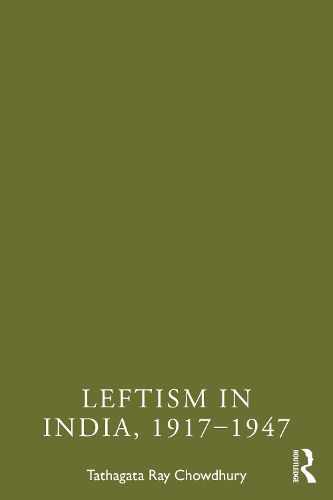Readings Newsletter
Become a Readings Member to make your shopping experience even easier.
Sign in or sign up for free!
You’re not far away from qualifying for FREE standard shipping within Australia
You’ve qualified for FREE standard shipping within Australia
The cart is loading…






This book provides a comprehensive account of the Leftist movements in India during the most decisive phase of its struggle for freedom. It also describes how the Leftist movements interacted with the mainstream Indian freedom movement led by the Indian National Congress, guided by Mohandas Karamchand Gandhi and his ideology of non-violence. This ideology directly opposed those who believed in Marxism-Leninism and, naturally, their policies clashed at almost every stage of the freedom movement. These clashes gave rise to dramatic developments, which have been described in this book in their proper context and analysed with scholarly objectivity.
The book traces the early twentieth century socio-political awakening of the bourgeois-democratic class of Indian society, the rise of Left-wing nationalists following the Swadeshi Movement, the activities of the early revolutionaries and the formation of the Communist Party of India abroad, the growth of communism in India, the growth of the Left wing within the Indian National Congress (known as the Congress socialists) and other Left parties, and various labour and peasant movements.
The book will be useful to the students, researchers and teachers of Political Science, History and South Asian Studies. Readers with an interest in South Asian politics and anyone wishing to gain a thorough understanding of the origin of the Left in India will also find the book interesting.
$9.00 standard shipping within Australia
FREE standard shipping within Australia for orders over $100.00
Express & International shipping calculated at checkout
This book provides a comprehensive account of the Leftist movements in India during the most decisive phase of its struggle for freedom. It also describes how the Leftist movements interacted with the mainstream Indian freedom movement led by the Indian National Congress, guided by Mohandas Karamchand Gandhi and his ideology of non-violence. This ideology directly opposed those who believed in Marxism-Leninism and, naturally, their policies clashed at almost every stage of the freedom movement. These clashes gave rise to dramatic developments, which have been described in this book in their proper context and analysed with scholarly objectivity.
The book traces the early twentieth century socio-political awakening of the bourgeois-democratic class of Indian society, the rise of Left-wing nationalists following the Swadeshi Movement, the activities of the early revolutionaries and the formation of the Communist Party of India abroad, the growth of communism in India, the growth of the Left wing within the Indian National Congress (known as the Congress socialists) and other Left parties, and various labour and peasant movements.
The book will be useful to the students, researchers and teachers of Political Science, History and South Asian Studies. Readers with an interest in South Asian politics and anyone wishing to gain a thorough understanding of the origin of the Left in India will also find the book interesting.